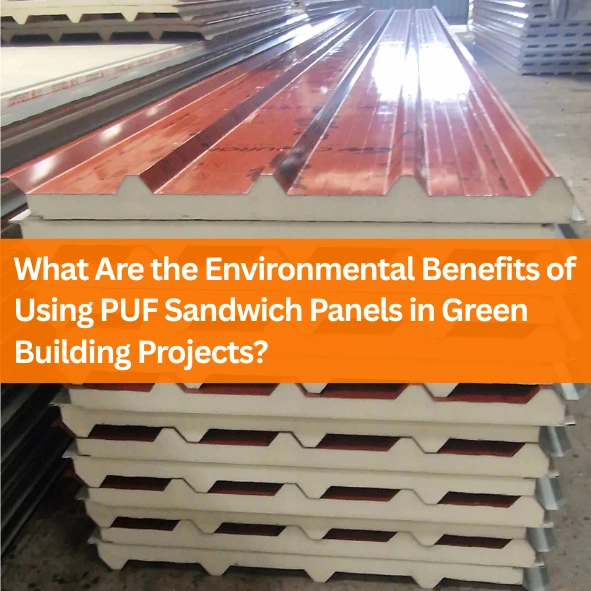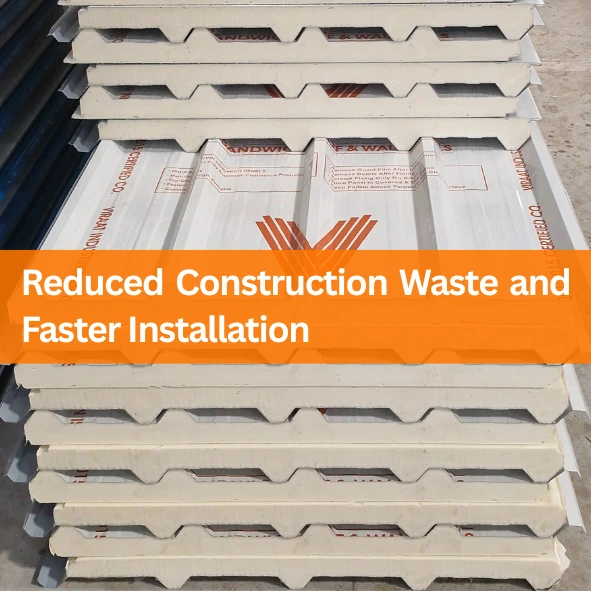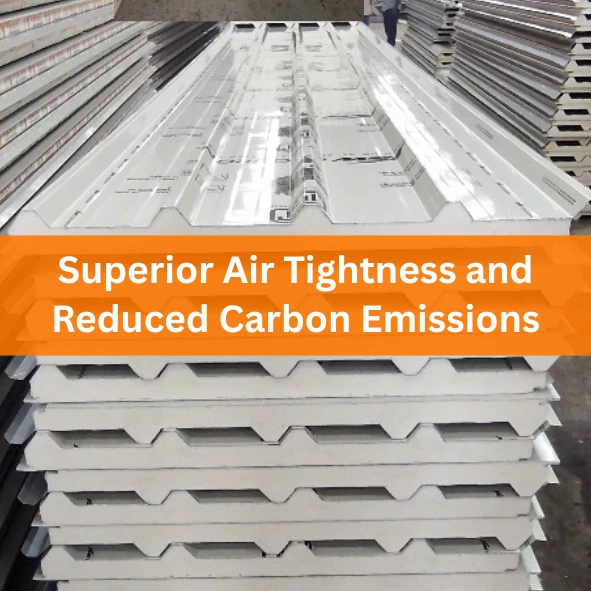
As sustainable construction becomes the new norm, the demand for eco-friendly building materials continues to rise. Among the many green construction solutions, PUF (Polyurethane Foam) Sandwich Panels have emerged as one of the most efficient and environmentally conscious options for modern architecture. Whether used for roofs, walls, or cold storage facilities, these panels are transforming the way industrial, commercial, and residential buildings are designed for energy efficiency and sustainability.
In this blog, we’ll explore how PUF sandwich panels play a crucial role in promoting green building projects and minimizing environmental impact.
Exceptional Thermal Insulation for Energy Efficiency
One of the biggest environmental advantages of PUF sandwich panels lies in their superior thermal insulation properties. The rigid polyurethane foam core effectively minimizes heat transfer, maintaining consistent indoor temperatures regardless of outdoor weather conditions.
This results in reduced dependence on heating and cooling systems, cutting down electricity consumption and carbon emissions. Over time, buildings equipped with PUF panels experience a significant drop in energy costs, making them not only eco-friendly but also economically sustainable.
In fact, compared to traditional construction materials like concrete or metal sheets, PUF panels can reduce HVAC energy use by up to 40%, helping builders achieve energy efficiency ratings required for green certifications like LEED or IGBC.
Lightweight and Sustainable Material
PUF sandwich panels are lightweight yet structurally strong, which reduces the overall load on the building structure. This means smaller foundation requirements, less use of concrete, and ultimately lower carbon footprint during construction.
Additionally, PUF panels are manufactured using CFC-free and HCFC-free foaming agents, ensuring that their production process does not harm the ozone layer. Many manufacturers, including leading brands like Viraat Industries, follow sustainable production practices, further enhancing the environmental benefits.
Reduced Construction Waste and Faster Installation

Traditional construction methods often involve large amounts of waste and resource consumption. In contrast, PUF panels are prefabricated, precisely cut to project requirements, and easy to install. This results in minimal on-site waste generation and lower resource wastage.
Because they are modular in nature, these panels also allow for quick installation, reducing construction time and the environmental impact associated with prolonged building activities such as machinery use and fuel consumption. The faster completion also reduces labor costs and enables quicker project handovers.
Recyclable and Reusable Components
Another major environmental benefit of PUF sandwich panels is their recyclability. Both the outer metal sheets and the inner polyurethane foam can be recycled or repurposed at the end of their life cycle. This aligns perfectly with the principles of a circular economy, where materials are reused instead of discarded.
In addition, when dismantled properly, PUF panels can often be reinstalled in other structures, minimizing waste and resource extraction. Their long service life, typically 20–25 years or more, ensures fewer replacements and less environmental strain.
Superior Air Tightness and Reduced Carbon Emissions

PUF sandwich panels are known for their excellent air-tight sealing capability. This prevents unwanted air leakage, ensuring that conditioned air stays inside and outside air remains out. As a result, buildings can maintain optimal energy performance, leading to lower energy demand and reduced carbon emissions.
When combined with solar panels or renewable energy systems, PUF panel structures can achieve near-zero energy consumption, which is the ultimate goal of green building design.
Fire Resistance and Indoor Air Quality
Modern PUF panels are manufactured with fire-retardant properties, contributing to a safer and more sustainable construction approach. Their design limits the spread of fire, helping protect occupants and reducing post-fire environmental pollution.
Furthermore, because high-quality PUF panels are made with non-toxic materials, they do not release harmful gases or VOCs (Volatile Organic Compounds) into indoor spaces. This ensures better indoor air quality, which is an essential component of sustainable building standards.
Long Life Span and Low Maintenance
Durability is another factor that makes PUF sandwich panels environmentally beneficial. They are resistant to corrosion, moisture, and microbial growth, meaning fewer replacements and repairs are needed over their lifespan.
This reduces resource use and environmental impact over the building’s lifetime. In the long run, fewer maintenance activities also mean less transportation, manufacturing, and material waste—further contributing to sustainability goals.
Contribution to Green Building Certifications
For developers aiming for green building certifications such as LEED, GRIHA, or IGBC, using PUF sandwich panels can significantly contribute to points under categories like Energy Efficiency, Material Resource Conservation, and Indoor Environmental Quality.
Their ability to reduce energy usage, promote recyclability, and improve indoor comfort makes them a preferred material in sustainable architecture. Builders who use these panels can easily align their projects with global green standards while maintaining design and structural integrity.
Conclusion
PUF sandwich panels are more than just an efficient insulation solution—they represent a commitment to sustainable construction and environmental responsibility. By offering energy efficiency, recyclability, and durability, they help reduce a building’s carbon footprint while maintaining performance and aesthetics.
As the world shifts towards eco-friendly infrastructure, PUF sandwich panels stand out as one of the smartest investments for future-ready, green building projects. For industries, warehouses, and commercial structures looking to build sustainably, partnering with a trusted manufacturer like Viraat Industries ensures quality, performance, and long-term environmental benefits.
Frequently Asked Questions
These panels typically last 20–25 years or more. Their resistance to corrosion, moisture, and microbial growth means fewer repairs or replacements, lowering the environmental impact over their lifetime.
Yes. Their benefits in energy efficiency, material resource conservation, recyclability, and indoor environmental quality make them favorable for certifications like LEED, IGBC, or GRIHA.
Good-quality panels are manufactured with fire-retardant additives and non-toxic materials. They resist the spreading of flames and do not emit harmful VOCs or gases, which helps maintain indoor air quality.
Yes, they are relatively lightweight compared to conventional construction materials. This reduces loads on foundations and structural elements, which in turn can lower the amount of concrete or steel needed — cutting associated embodied carbon.



